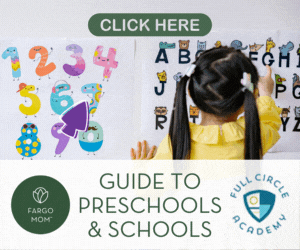“How do I get my kid to eat?”
As an Occupational Therapist, this is a phrase I hear often. Parents come in with their child who is struggling to eat foods, whether due to a physical or behavioral concern, and they are looking for solutions to help their child eat a well-rounded, healthy diet.
One of the strategies I start with is guiding parents on how we talk about the food we eat.
When talking to kids about the food, we want to focus on POSITIVE words to make the food feel SAFE and FUN. The best way to do this is to explore the sensory properties of the food items.
Pick 2 or 3 (or all 5!) of the senses listed below to explore with each food you are serving them. This is a great time to pretend to be a scientist (and get your kiddo involved, too)!
Tips for Making Food Fun
What does it LOOK like?
Notice how the food looks, what size it is, and how it changes.
- Size (Examples: that’s a big piece of cake or that’s a little dot of ketchup)
- Shape (Examples: that’s a stick shape, that cracker is square, the pudding doesn’t stay in one shape!)
- Color (Examples: What color is it? Is it the same color as any other foods on the plate? Would it taste the same if we turned the food a different color?)
- Describe what happens when you make changes to the food. (Examples: “Look how the orange carrot gets brighter when we peel it!” “The carrot is thick and round, but the peelings are skinny and flat.” “I can chop the carrot, and now pieces are shaped like circles!”)
Examples of descriptive words to use: big, small, medium, round, square, no shape, colors, shiny, long, short, stick-shaped, flat
How does it FEEL?
You can explore the feeling of the food with your fingers and hands or with your mouth.
Some questions to ask:
- What is the temperature of the food? Is it hot or cold?
- What is the texture of the food?
- Does the food have multiple textures? How are they different? (Examples: “The soup feels warm and wet.” “I can find a smooth carrot.” “Look how it squishes and turns into mush when I push it with my finger.” “The chicken stays solid when I try to squish it.”)
Examples of descriptive words to use: smooth, bumpy, hard, soft, hot, cold, warm, sticky, slimy, squishy, wet, dry, rough, crumbly, powdery, creamy, juicy, crispy, crunchy, slippery
What does it SMELL like?
Smell is directly related to how food tastes, so smelling the food first can give you a lot of information about it before tasting it.
Some questions to ask:
- Is it a big or little smell? We use the rule of thumb that being able to smell the food across the room or table is a BIG smell. If the food can only be smelled when it’s right next to your nose, it’s a LITTLE smell.
- Does the food remind you of a different food that you like?
- Can you smell any of the individual ingredients? (Example: “I smell the cinnamon in the applesauce! It smells spicy and sweet.”)
Examples of descriptive words to use: sweet, sour, bitter, spicy, salty, big, little
Does it make a SOUND?
Encourage your child to notice sounds when preparing and eating foods:
Some questions to ask:
- What sound does the food make when you tap it against the plate?
- Does the food make a sound when you cut it?
- What sound does the food make when you bite it?
- What does the food sound like when you shake it in a container?
Examples of descriptive words to use: big crunch, little crunch, squish, splat, loud, quiet
What does it TASTE like?
This is typically where we hear a lot of negative comments such as “That’s yucky!”. Try to encourage POSITIVE comments about the taste.
Some questions to ask:
- Can you change the taste of the food if you dip it into something such as ketchup, mustard, peanut butter, etc.?
Examples of descriptive words to use: big, little, sweet, sour, bitter, salty, spicy, savory Be creative and come up with your own ways to talk about and explore the food!
When we talk about food in a positive and descriptive way with our kids, we make it feel more fun and enticing! Just a few of these strategies can help kids change their mindset about food to make it a fun, new experience for them.
Have concerns about your child’s eating habits or skills? The therapists at Beyond Boundaries Therapy Services can provide a free screening to help determine your child’s skills and how they support you in their journey to better eating. Visit their website to find out more or call 701-356-0062 to schedule your first screening!
About the Author:
Brianna Jastram, MOTR/L Occupational Therapist
 Brianna recently developed the “Sensational Tykes!” House of Everyday Learning camp at Beyond Boundaries Therapy Services, which has been a huge success! She also specializes in feeding therapy and other areas of interest include educating parents and the community about the role of OT and how they can help improve their daily lives. She particularly enjoys the uniqueness of each child and loves to celebrate every milestone!
Brianna recently developed the “Sensational Tykes!” House of Everyday Learning camp at Beyond Boundaries Therapy Services, which has been a huge success! She also specializes in feeding therapy and other areas of interest include educating parents and the community about the role of OT and how they can help improve their daily lives. She particularly enjoys the uniqueness of each child and loves to celebrate every milestone!
















